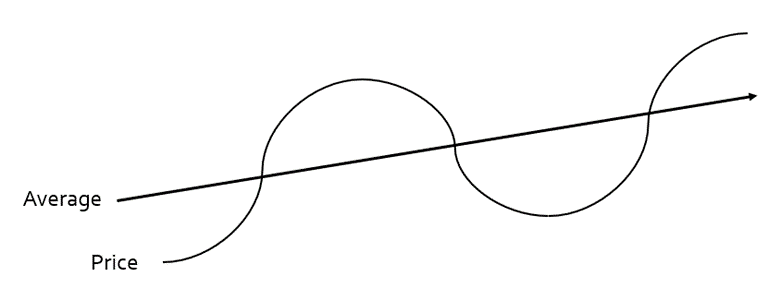10 Rules of Investing – Part 1
Blog post
04/18/24After studying under Benjamin Graham, known as the “father of value investing,” at Columbia University in the late 1950s, Bob Farrell began his career as an analyst at Merrill Lynch. Following a distinguished tenure as one of Wall Street’s leading analysts, Farrell ascended to the position of chief market strategist at Merrill Lynch. During the late stages of his career in the 1990s, Bob unveiled his “10 Market Rules to Remember” which, even three decades later, remain relevant. In this multipart blog series, we will delve into each of these rules, exploring their significance in today’s financial landscape.
Bob Farrell’s 10 Market Rules to Remember:
- Markets return to the mean over time.
- Excesses in one direction lead to excesses in the opposite direction.
- Excesses are never permanent, there are no new eras.
- Rapidly rising or falling markets usually go further than you think, but they do not correct sideways.
- The public buys the most at the top and the least at the bottom.
- Fear and greed are stronger than long-term resolve.
- Markets are strongest when they are broad and weakest when they are narrow to a handful of blue-chip names.
- Bear markets have three stages – sharp down, rebound, fundamental downtrend.
- When all the experts and forecasts agree, something else is going to happen.
- Bull markets are more fun than bear markets.
Rule 1: Markets Return to the Mean Over Time:
Mean reversion is the basis of many investment strategies today. The idea is that there are times when investors are overly optimistic and times when they are overly pessimistic, but eventually prices will revert to some sort of average. There are a variety of ways to get to that average such as moving averages, long-term valuation levels, or relative performance. The moral of the story with rule 1 is that an investor should not get caught up in the shorter-term hype around a particular holding. Assuming the long-term thesis is still intact, one should expect prices to ebb and flow around the average over time. Below is an illustration of this idea:

Rule 2: Excesses in One Direction Lead to Excesses in the Opposite Direction:
When the market “crashes” (drops more than 20%) over a short period of time, investors commonly exhibit herding behavior, where they begin to sell just because everyone else is doing it. These events are typically fear-driven and can result in large price drops for some time. While rare, these situations can lead to great buying opportunities as prices tend to fall well below their long-term averages due to the market’s overreaction to these events. Investors should be patient in these situations and take advantage of these opportunities when they can. Throughout history, buying in these periods of fear has led to high returns over the next year.

Conclusion
In part 1 of this blog series on Bob Farrell’s market rules, we discussed the concept of mean reversion. As investors, understanding the principle of mean reversion is essential for maintaining a balanced perspective on market fluctuations. By recognizing that prices tend to revert to an average over time, we can avoid being swayed by short-term market sentiment and stay focused on our long-term investment goals. In our next installment, we will delve into more of Farrell’s insightful market rules.
If you have questions and would like to talk with us further, please call us at 513-271-6777. For more THOR reading, click here to go to the Blogs and Market Updates section on our website. Follow us on social media: